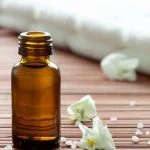Are you wondering how many drops of oil do you put in aromatherapy? Aromatherapy is a popular holistic healing treatment that involves using natural plant extracts, known as essential oils, to promote health and well-being.
The number of drops of essential oil used in aromatherapy is crucial, as it directly impacts the effectiveness and safety of the treatment. In this article, we will delve into the basics of aromatherapy and explore the significance of using the right amount of essential oil drops for optimal results.
When it comes to aromatherapy, understanding the potency of essential oils is key. Different essential oils have varying concentrations and strengths, which determine the number of drops to use. Factors such as individual sensitivity, type of oil, and method of application also play a significant role in determining the appropriate number of drops for aromatherapy. With so many variables to consider, it’s important to have a comprehensive understanding of how to use essential oils safely and effectively.
In this article, we will provide a comprehensive guide on the recommended number of drops for different uses, such as diffusers, massage oils, bath blends, and inhalation. Additionally, we will highlight safety precautions to take when using essential oils and address common mistakes to avoid in order to ensure the right number of drops are used.
Whether you’re new to aromatherapy or seeking expert insights on utilizing essential oils, this article aims to provide you with valuable information on determining the appropriate number of drops for your aromatherapy needs.
Understanding the Potency of Essential Oils
Essential oils are highly concentrated plant extracts that are used in aromatherapy for their therapeutic properties. The potency of essential oils can vary widely depending on the type of plant and the method of extraction. This potency directly affects the number of drops to use in aromatherapy, as using too much or too little can impact the effectiveness and safety of the treatment.
One important factor to consider when determining how many drops of oil to use in aromatherapy is the concentration and strength of different essential oils. For example, some essential oils are more potent than others and require fewer drops to achieve the desired effect. Additionally, certain essential oils may be more suitable for topical application, while others are better suited for diffusion or inhalation.
Another consideration when determining the number of drops to use is the individual’s sensitivity to specific essential oils. Some people may have a higher tolerance for certain scents, while others may be more sensitive and require fewer drops for a milder effect. It’s important to take into account personal preferences and sensitivities when using essential oils in aromatherapy.
Moreover, the method of application also plays a crucial role in determining how many drops of oil to use. For instance, diffusers typically require a different number of drops compared to massage oils or bath blends. Understanding these differences and adjusting the number of drops accordingly ensures a safe and enjoyable aromatherapy experience.
| Factors | Considerations |
|---|---|
| Concentration and Strength | Different oils have varying potency |
| Individual Sensitivity | Personal tolerance levels impact drop usage |
| Method of Application | Different applications require different drop amounts |
Factors to Consider
When it comes to using essential oils in aromatherapy, determining the right number of drops to use is essential for achieving the desired therapeutic effects. However, there are several factors that can influence the appropriate number of drops to use, and it’s important to consider these variables to ensure safe and effective use of essential oils.
Individual Sensitivity:
One of the most important factors to consider when determining how many drops of oil to use in aromatherapy is an individual’s sensitivity to the oil. Some people may be more sensitive to certain essential oils, which means they may require fewer drops for a particular application. It’s crucial for individuals to start with a small number of drops and gradually increase as needed, especially if they are new to using essential oils.
Type of Oil:
The type of essential oil being used also plays a significant role in determining the appropriate number of drops for aromatherapy. Different essential oils have varying levels of potency and concentration, which can affect how many drops should be used. For example, highly concentrated oils like peppermint or cinnamon may require fewer drops compared to milder oils like lavender or chamomile.
Method of Application:
The method of application is another factor that influences the number of drops of oil to use in aromatherapy. Whether it’s through inhalation, topical application, or diffusion, each method requires a different approach in terms of the number of drops used. For instance, using a diffuser may require more drops compared to mixing with carrier oils for topical application.
- The proper way for diluting essential oils
- Using carrier oils such as coconut oil
- Following recommended dilution ratios
- Potential risks associated with using too many drops
- Skin irritation and sensitization
- Adverse reactions due to high concentration
- How individual’s sensitivity affects drop count
Ultimately, understanding these factors and their influence on the number of drops will help individuals make informed decisions when using essential oils for aromatherapy. It’s important to consult with a qualified aromatherapist or healthcare professional if there are any concerns about using essential oils safely and effectively.
Recommended Drops for Different Uses
When using essential oils for aromatherapy, it is crucial to understand the recommended number of drops to use for different applications. The potency and strength of essential oils vary, so using the right amount is essential for safe and effective use. Below is a comprehensive guide on the number of drops recommended for various uses:
1. Diffusers:
Using too many drops in a diffuser can be overwhelming, so start with a smaller amount and adjust as needed.
2. Massage Oils:
It is important to dilute essential oils before applying them to the skin to avoid irritation.
3. Bath Blends:
Adding essential oils directly into bathwater can cause skin irritation, so always dilute them before use.
4. Inhalation:
Inhalation methods require fewer drops due to direct exposure to the respiratory system.
By understanding these guidelines, individuals can ensure they are using the appropriate number of drops for their specific aromatherapy needs, promoting both safety and effectiveness in their practice. Whether you are diffusing oils, creating massage blends, preparing bath products, or utilizing inhalation methods, following these recommendations will help maximize the benefits of essential oils while minimizing any potential risks associated with overuse.
Safety Precautions
Aromatherapy is a popular practice that involves using essential oils for their therapeutic benefits. However, it is crucial to understand the importance of diluting essential oils and using the right number of drops to ensure safety and efficacy.
When it comes to aromatherapy, using too many drops of essential oil can have adverse effects on the skin, respiratory system, and overall well-being. This section will highlight the significance of dilution and the potential risks associated with using too many drops of essential oil.
Essential oils are highly concentrated plant extracts that need to be diluted before use. The potency of essential oils can vary significantly, with some oils being more potent than others. For example, peppermint and eucalyptus essential oils are known for their strong aroma and should be used sparingly. On the other hand, lavender and chamomile essential oils are milder and can be used in slightly larger quantities.
One of the main risks of using too many drops of essential oil is skin irritation. Undiluted or highly concentrated essential oils can cause irritation, redness, and even chemical burns when applied directly to the skin.
Inhaling an excessive amount of undiluted essential oil can also lead to respiratory issues such as coughing, wheezing, or shortness of breath. Additionally, using too many drops of certain essential oils in a diffuser or as a topical application can result in sensitization over time, where the body becomes increasingly reactive to the oil.
| Risks | Effects |
|---|---|
| Skin Irritation | Irritation, Redness, Chemical Burns |
| Respiratory Issues | Coughing, Wheezing, Shortness of Breath |
| Sensitization | Increased Reactivity to Oil Over Time |
Common Mistakes to Avoid
Not Diluting Essential Oils
One common mistake people make when using essential oils in aromatherapy is not diluting them properly. Essential oils are highly concentrated and can be too potent if used directly on the skin or inhaled without dilution.
As a general rule, it is recommended to use a carrier oil (such as coconut oil or sweet almond oil) to dilute essential oils before applying them topically. For inhalation, adding a few drops of essential oil to a bowl of hot water or using a diffuser can help disperse the scent without overwhelming the senses.
Using Too Many Drops
Another mistake that people often make is using too many drops of essential oil, which can lead to adverse reactions or overpowering scents. It’s crucial to follow recommended guidelines for the number of drops to use based on the specific method of application and type of oil.
For example, when creating a massage oil blend, it’s generally advised to use 10-15 drops of essential oil per ounce of carrier oil. Similarly, for diffusion, the number of drops will vary depending on the size of the room and personal preference.
Ignoring Sensitivity and Allergies
Ignoring individual sensitivity and allergies is another common error that can occur when using essential oils. Not everyone reacts the same way to certain oils, and some individuals may have allergic reactions or sensitivities to specific scents. It’s important for users to do a patch test before extensive use and be mindful of any adverse reactions. Additionally, pregnant women, children, and pets may have different sensitivities and require special consideration when using essential oils in aromatherapy.
Tips for Beginners
If you’re new to the world of aromatherapy, you may be wondering how to measure and control the number of drops of essential oil to use for optimal results. It’s important to note that using the right amount of essential oil drops is crucial in ensuring safety and effectiveness in aromatherapy practices. Here are some practical tips for beginners on how to navigate this aspect of aromatherapy.
Understanding Dilution
One of the most important things for beginners to grasp when it comes to using essential oils is the concept of dilution. Essential oils are highly concentrated and potent, so they must be diluted before use in most applications. Understanding how to dilute essential oils properly will help you determine the right number of drops to use for different purposes, whether it’s for a diffuser, massage oil, or bath blend.
Start With Small Amounts
As a beginner, it’s best to start with small amounts of essential oils and gradually increase as you become more familiar with their potency and effects. When using a diffuser, start with just a few drops and adjust based on your preference for scent intensity. For topical application like massage oils or bath blends, begin with a low number of drops and increase as needed. This cautious approach will help you avoid using too many drops initially.
Consult Reliable Sources
To ensure that you are using the correct number of drops for your specific needs, it is helpful to consult reliable sources such as books written by experts in aromatherapy or reputable websites dedicated to essential oils. These sources can provide valuable information on recommended drop amounts for different uses and can guide you in making informed decisions about how many drops of oil to use in various situations.
By following these practical tips and taking the time to learn about the proper usage of essential oils in aromatherapy, beginners can gain confidence in determining the appropriate number of drops for optimal results. With patience and careful consideration, anyone new to aromatherapy can enjoy the benefits of this holistic practice while ensuring safety and effectiveness at all times.
Expert Insights
In conclusion, determining the appropriate number of drops for aromatherapy is essential for achieving the desired therapeutic effects while ensuring safety. Aromatherapy experts emphasize the importance of understanding the potency of essential oils, individual sensitivity, and method of application when deciding on the number of drops to use. By considering these factors, individuals can customize their aromatherapy experience to suit their needs and preferences.
It is crucial to consult with experienced practitioners or refer to reputable sources for guidance on the recommended drops for different uses, such as diffusers, massage oils, bath blends, and inhalation. Additionally, beginners should take note of safety precautions and common mistakes to avoid when using essential oils. Dilution is key in avoiding adverse effects from using too many drops of essential oil.
Overall, by following expert insights and practical tips, individuals can maximize the benefits of aromatherapy while minimizing potential risks. Aromatherapy offers a holistic approach to wellness, and understanding how many drops of oil to use ensures a safe and effective experience. With the right knowledge and guidance, anyone can harness the power of essential oils for their well-being.
Frequently Asked Questions
Can You Put Too Many Drops of Essential Oil in a Diffuser?
Yes, it is possible to put too many drops of essential oil in a diffuser. This can lead to overpowering scents, potential irritation, or even adverse health effects. It’s best to follow the recommended guidelines for the specific diffuser and oil.
Is 4 Drops of Essential Oil Too Much?
Whether 4 drops of essential oil is too much depends on the type of oil, the size of the room, and individual sensitivity. It’s important to start with a lower amount and adjust based on personal preference and any potential reactions.
What Is the Best Way to Use Aromatherapy Oils?
The best way to use aromatherapy oils is through diffusion, topical application (when diluted with a carrier oil), or inhalation methods like adding a few drops to a warm bath. It’s important to use high-quality oils and consider personal preferences when incorporating aromatherapy into daily life.

Are you looking for a natural way to improve your health and wellbeing?
If so, aromatherapy may be the answer for you.






